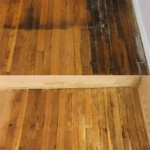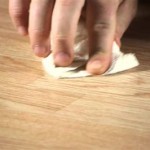Essential Aspects of Installing Linoleum Flooring in Basement
Transforming your basement into a functional and stylish space can be achieved with the addition of linoleum flooring. This durable and affordable option offers numerous benefits, making it an ideal choice for basements. Installing linoleum flooring requires careful preparation and precise execution to ensure a long-lasting and aesthetically pleasing result. This article provides a comprehensive guide to the essential aspects of installing linoleum flooring in your basement.
1. Preparation:
Subfloor Inspection & Leveling: Before installing linoleum, it's crucial to inspect the subfloor for any imperfections or irregularities. The surface should be level, stable, and dry. Any unevenness or moisture can compromise the adhesion of the linoleum flooring.
Acclimation: Linoleum can expand and contract due to temperature changes. Prior to installation, allow the linoleum rolls to acclimate to the basement's temperature for at least 48 hours.
2. Installing Underlayment:
Purpose: Installing an underlayment serves various purposes. It provides a moisture barrier, reduces sound transmission, and enhances the overall comfort and warmth of the flooring.
Materials: Choose an underlayment compatible with linoleum flooring and suited for basement applications. Vapor barriers or acoustic underlayments are recommended.
3. Cutting & Positioning:
Layout Planning: Determine the layout of the linoleum sheets to minimize waste and achieve a seamless appearance. Measure the basement and plan the arrangement to avoid unnecessary cuts.
Cutting: Use a sharp utility knife or a flooring cutter to cut the linoleum sheets precisely. Ensure straight cuts and clean edges for a professional finish.
4. Adhesion:
Adhesive Selection: Choose a high-quality adhesive specifically designed for linoleum flooring. Follow the manufacturer's instructions regarding application methods and drying times.
Application: Apply the adhesive to the subfloor or the back of the linoleum sheets, depending on the adhesive type. Use a notched trowel to ensure even distribution.
5. Installing & Rolling:
Positioning: Carefully place the linoleum sheets onto the adhesive, starting from the center of the basement and working towards the edges.
Rolling: Use a heavy roller to apply firm pressure and remove any air bubbles. Roll in multiple directions to ensure proper adhesion.
6. Trimming & Finishing:
Trim Excess: Once the linoleum is installed, trim any excess material around the edges using a sharp utility knife.
Sealants: Apply a sealant around the perimeter of the flooring, where it meets walls or other surfaces, to prevent moisture penetration and ensure a clean finish.
7. Maintenance & Care:
Regular Cleaning: Linoleum flooring requires minimal maintenance. Sweep or vacuum regularly to remove dust and dirt. Use a damp mop with a neutral cleaner to clean spills or stains.
Avoid Harsh Chemicals: Avoid using harsh cleaning agents or abrasive materials that can damage the linoleum's surface.
Conclusion:
Installing linoleum flooring in your basement requires preparation, precision, and attention to detail. By following these essential aspects, you can achieve a durable, stylish, and comfortable floor that enhances the functionality and aesthetic appeal of your basement.

How To Install Linoleum Flooring Guide Forbes Home

How To Install Linoleum Flooring

How To Install Linoleum Flooring On Concrete Doityourself Com

Thumbor Forbes Com Fit In 900x510 Https

I Ytimg Com Vi Xez0mu74sji Sddefault Jpg

Installing Linoleum Flooring 6x10 Enclosed Trailer Conversion Project

Parryscarpets Com Au Wp Content Uploads 2024 01 Ho

How To Install Linoleum Flooring On Stairs Doityourself Com

How To Seal Seams In Linoleum Flooring Doityourself Com

A Beginner S Guide To Installing Vinyl Plank Flooring Dumpsters Com
Related Posts








